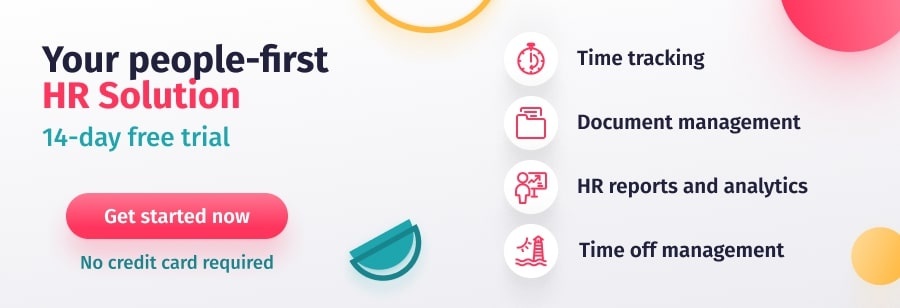Certain effects of the Covid-19 pandemic, such as an increased reliance on remote working and technology, have accelerated the transformation to automation and digitization. This has uncovered a widening skills gap that companies need to close if they are to survive in a post-pandemic economy. One increasingly popular solution is reskilling the workforce.
In fact, the demand for skills has shifted so much so that, according to McKinsey, an estimated 107 million workers may need to reskill by 2030. For example, many companies are now training their employees to help them develop more technological, social, and emotional skills. In contrast, less focus is being placed on basic cognitive and manual skills.
So, what exactly is reskilling, why is it so important, and how do you reskill and upskill for a future-ready workforce?
Reskilling Definition
Reskilling definition: a valuable learning and development tool used by HR departments to facilitate the learning of new and different abilities in order to reduce skills gaps.
It’s important to understand the difference between reskilling and upskilling. When you upskill, you improve the existing skills and knowledge of an employee in order to help them progress in their position. You might, for example, upskill an employee in preparation for a promotion.
In contrast, when you reskill an employee, you teach them new skills in order to prepare them for a completely different position within your organization. You might do this because you have identified skill gaps that are preventing your company from reaching its performance goals and you would prefer to recruit internally.
Organizations often employ both reskilling and upskilling strategies to enable internal mobility and prepare their workforces for future success.
Reskilling Examples
There are countless ways to reskill an employee and promote talent development. The methods that work best for you will depend on the nature of your business, your long-term objectives, and your existing skills and resources.
Here are a few typical examples of when you might implement a strategy for reskilling the workforce:
- Manufacturing: some of the processes in your plant have been automated and certain roles in the company are now obsolete. You can reskill employees from newly redundant positions so that you can develop their talent in another department.
- Corporate: technological advancements have changed your processes and business practices. You now need to create new roles within your company so that these developments can be managed. Instead of hiring externally, you might decide to reskill existing employees and fill the position internally.
- Retail: a retail company that is switching to 100% e-commerce sales might choose to reskill existing in-store sales assistants so that they can work as remote customer service agents instead.
The Importance of Reskilling Your Workforce
There are a number of reasons why career upskilling has become so popular over recent years.
Here are just a few of the benefits:
- Skills gaps. One of the biggest reasons reskilling employees is now so popular is that many companies are facing growing skills gaps. These gaps have emerged as an effect of emerging technologies and working models that have shifted the demand for skills. Reskilling can help you retrain your existing employees in these skills in order to meet your long-term organizational goals and keep up with an evolving industry.
- Growth opportunities. By promoting a culture of future skilling, you will be showing current and future employees that you care about their development. This can help you attract and retain the right top talent to take your business to the next level.
- Engagement. When employees are able to expand and develop their skills it can make them more motivated and engaged. Reskilling the workforce also helps employees expand their knowledge to other departments. This helps to create connections between departments based on empathy rather than an “us versus them” competitive mentality.
- Creativity, productivity, and morale. The more confidence a workforce has in its skills and abilities, the more productive, creative, and innovative it will be. New skills also boost morale as your employees feel more valued and heard.
The Process of Reskilling
There are numerous reasons why you might start reskilling your workforce. There are also countless strategies you can use to reskill your employees. Whatever strategy you choose, you should always stick to the following key steps for reskilling the workforce.
Research Trends
The first step is looking at the bigger picture. What’s going on in your industry, and what are your competitors doing?
Conduct research to find out what’s trending and where your industry might be headed. How do you anticipate jobs and skills evolving in your market? Have your competitors made any major changes in order to adapt to evolving customer needs? Which skills would help you stand out from the crowd and enable you to better meet these demands?
This stage will help you figure out what skills your organization needs to acquire in order to stay relevant.
Identify Skill Gaps
Once you work out where you need to be, you need to establish what you need to do in order to get there. This means working out which positions you need to fill, what skills you are currently lacking, and what training agreements you need to put in place in order to get the company where it needs to be.
The best place to start with this is to conduct a thorough training needs analysis to establish what skills you have, and which skills gaps you need to fill. This will help you determine the direction you need to take so that you can design a development plan for employees that targets identified gaps.
A good way to establish what these gaps are is to use a Skills Matrix Template to help you compare existing skills with overall objectives. You should also gather employee feedback and use design thinking in HR to help you find learning solutions that your employees engage with, as this will make learning far more accessible and enjoyable.
Design & Implement Training for Reskilling
Once you’ve established what skills you have vs. what skills you need, you are ready to build an employee training program for reskilling your workforce.
There are a number of possibilities here. You can opt for traditional training courses (remote or face-to-face), seminars, or conferences. You might decide to implement initiatives for coaching in the workplace or performance coaching. Another great option for reskilling is launching a workplace mentorship or peer mentoring program. Or, you might decide that a combination of strategies will help you address all L&D requirements and learning styles. This is often the most successful training strategy.
Create a Culture of Learning
Reskilling is not a one-off initiative; it is an ongoing process. For your initiative to work, you need to make sure you ingrain the value of reskilling in your learning culture. This will help you create the right mindset so that employees are motivated to participate in reskilling opportunities. It will also help you get your leaders on board so that they understand the importance of developing their staff.
A learning culture is a set of organizational practices, beliefs, values, and processes within a workplace. It is an environment where employees are encouraged to develop their knowledge and skills and they are offered learning and development opportunities that help them perform at their best.
Monitor L&D Metrics
It’s also important to monitor your progress so that you know what kind of an impact your reskilling efforts are having.
The best place to start with this is to establish some clear and measurable KPIs and track them regularly. Calculate your retention levels, monitor performance levels, and keep an eye on productivity. Are levels going up? Are your employees applying their new skills? Is it having a positive impact on your business goals?
Most importantly, gather feedback to find out how your employees feel about your reskilling efforts. Invite them to complete regular surveys and hold 360 feedback sessions as often as you can. You can then use the data you collect to make the necessary adjustments to your reskilling program.
Reskilling and Upskilling for a Future-Ready Workforce
The skills you have and the skills you need will be personal to you and your workforce. And the benefits you will get from reskilling are also subjective. However, one benefit that cannot be denied is that reskilling and upskilling are valuable tools for getting your workforce ready for the future of work. Reskilling can help you teach your employees the skills they need to work in technology-driven markets. This helps you create a balanced organization with skills in all key drivers of the future. In fact, the World Economic Forum warned that over half of employees around the globe will need to reskill or upskill by 2025 to stay competitive. Now is the time to strike whilst the iron is hot.
With reskilling, you can develop and motivate your existing workforce so that you can get the best from them. This will help you retain them as loyal and productive members of staff, and help you remain competitive. Reskilling is also a great way to keep you fresh and relevant in an ever-changing market. What’s more, training, upskilling, and reskilling are far more cost-effective than recruiting and hiring externally, so it will boost your bottom line in the short and long term.


